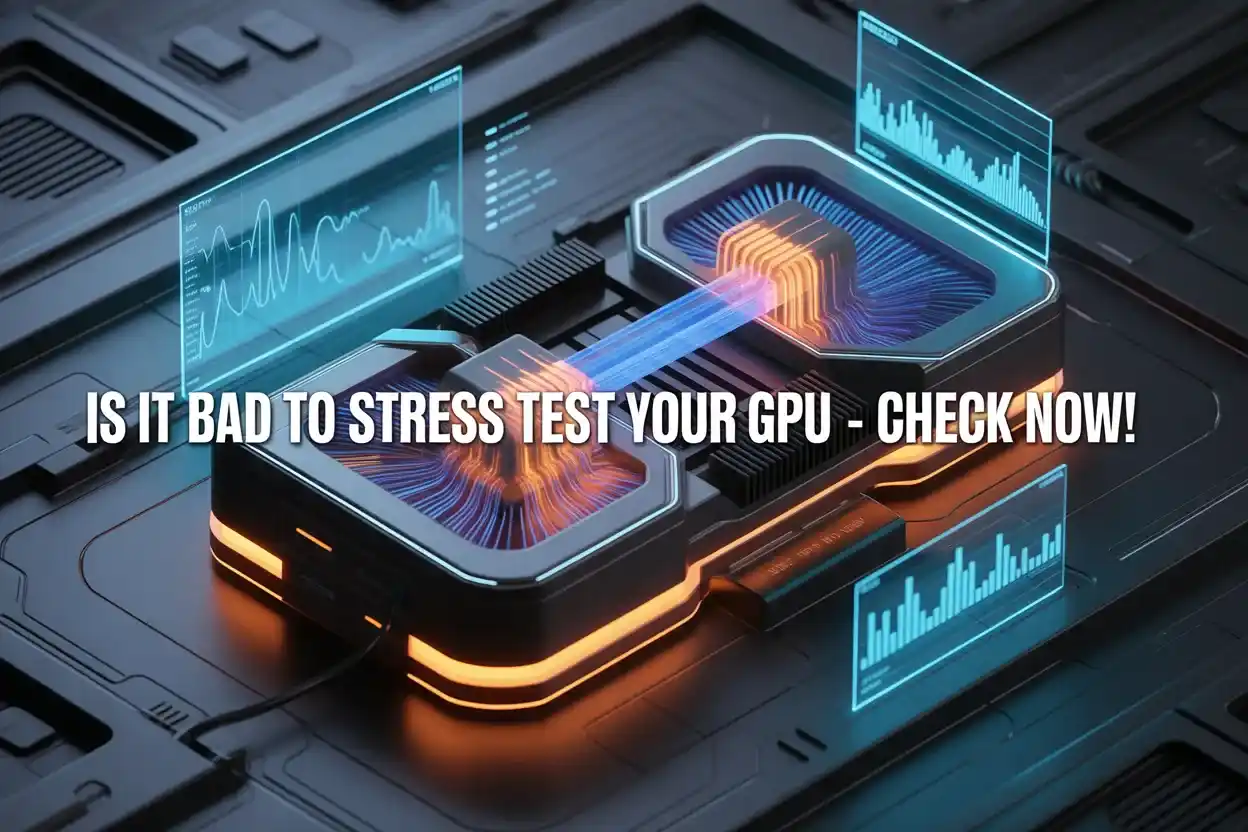Stress testing your GPU is not bad if you do it carefully. It helps check speed, performance, and stability. But if you run tests for a long time, it can overheat and reduce its lifespan. Always use safe software, keep cooling, and watch the temperature for safety.
This guide will help you understand the safe methods, risks, and benefits so you don’t damage your graphics card while checking its limits.
What Does Stress Testing a GPU Mean?
Stress testing a GPU means pushing your graphics card to maximum load for a set time. It checks stability, speed, and temperature under pressure. This process helps you know if your GPU can handle demanding games or software without crashing. It is like a health check for your graphics card.
Why Do Gamers Stress Test Their GPU?
Gamers stress-test their GPU to confirm if it can run games smoothly at high settings. It helps detect overheating, weak performance, or unstable overclocking. Stress testing also shows the true strength of the graphics card. For gamers, it ensures smooth play, better visuals, and safe hardware performance under heavy load.
Also Read:Which GPU is Better for Gaming in 2025
Can Stress Testing Damage Your GPU?
Stress testing itself does not damage your GPU if handled properly. Short and safe tests help you understand performance and stability. Problems start when the card runs too long without cooling, which may cause overheating, crashes, or reduce lifespan. With proper care, stress testing is safe and often very useful.
How Long Should You Stress Test a GPU?
The test duration depends on your purpose. A quick check usually takes 10–15 minutes. For stability, one hour is enough. Running stress tests for hours is not safe because it overheats the card.
- Quick test: 10–15 minutes
- Stability test: 1 hour
- Avoid long continuous sessions
What Are the Benefits of GPU Stress Testing?

GPU stress testing has many benefits. It shows if the graphics card works well under heavy load, checks stability for gaming, and ensures safe overclocking. It also helps detect overheating or early failures before problems occur. For PC users, stress testing gives confidence that their GPU is stable and reliable.
What Risks Come With Stress Testing a GPU?
Stress testing has some risks if done without care. Overheating is the most common issue, which may lead to slower performance or crashes. In rare cases, it can shorten the card’s life.
Main risks include:
- High temperature
- Reduced lifespan
- Game or system crashes
Good cooling prevents these issues.
Which Software Is Safe for GPU Stress Testing?
Safe software ensures accurate testing without damage. Some trusted programs are:
- FurMark – strong and reliable
- MSI Kombustor – user-friendly
- 3DMark – benchmarks and tests
- Unigine Heaven/Valley – stability and visuals
Always choose well-known tools and avoid unsafe or untrusted software. Monitoring temperature during tests is also important.
How to Keep Your GPU Safe While Stress Testing
To keep your GPU safe, monitor its temperature closely. Always test with safe software and avoid running it for hours. Maintain good cooling with fans or liquid cooling. Stop immediately if you notice overheating, strange noises, or screen issues. Careful testing ensures safety and protects your graphics card.
Also Read:Why is a GPU Important for Gaming
Signs Your GPU Is Overheating During Stress Test
An overheating GPU shows clear warning signs. These include loud fan noise, screen glitches, stuttering, or sudden system shutdown. FPS drops and visual artifacts also appear when the card is too hot. If you notice these problems, stop the test immediately to prevent damage and keep your graphics card safe.
Should Beginners Stress Test Their GPU?

Beginners can stress test their GPU if they follow safe steps. Use trusted software, run short tests, and monitor the temperature. Avoid long or extreme testing as it may harm the card. For new PC users, short tests are enough to check performance while keeping the GPU safe from risks.
Who Should Stress Test a GPU?
Stress testing is not for everyone. Gamers, overclockers, and PC builders mostly need it to confirm stability. Regular users who only browse or stream don’t need stress testing. This makes the process useful mainly for those who push their GPU with heavy tasks, high-resolution games, or professional software.
Also Read:Where to Find GPU in Device Manager
Is GPU Stress Testing Worth It?
Stress testing your GPU is worthwhile if you want to check its performance and stability. It helps identify problems early and ensures safe gaming or heavy work. Safe software, short sessions, and proper cooling it provides peace of mind without causing damage. Careful stress testing is smart and useful.
FAQs’:
1. Can Stress Testing Lower GPU Performance Over Time?
Yes, if done too often or for extended periods, stress testing may cause overheating, which can gradually reduce GPU performance.
2. What Temperature Is Safe for GPU Stress Testing?
Most GPUs are safe up to 85°C, but keeping it under 80°C is better for long-term health and stable performance.
3. Is Stress Testing Good for New Graphics Cards?
Yes, short stress tests are good for checking new GPUs, but running them for too long can be unsafe for new cards.
4. Does Stress Testing Void GPU Warranty?
No, stress testing itself does not void the warranty if you use safe software, but damage from misuse or overheating is not covered.
5. Can Stress Testing Be Done on Laptops?
Yes, but it is risky because laptops heat faster and have less cooling, so short and careful testing is recommended.
Conclusion:
Stress testing your GPU is safe if done with care. It helps you check performance, heat, and stability before gaming or heavy work. Always use trusted software, keep proper cooling, and avoid long sessions. When tested wisely, it protects your graphics card and gives confidence that your GPU can handle tough tasks smoothly.

